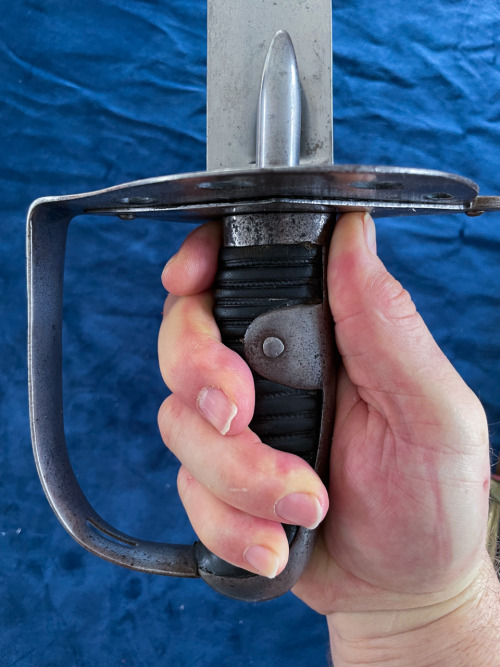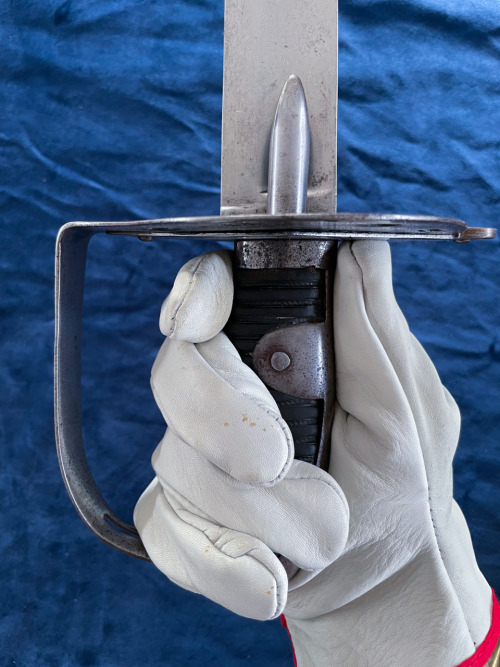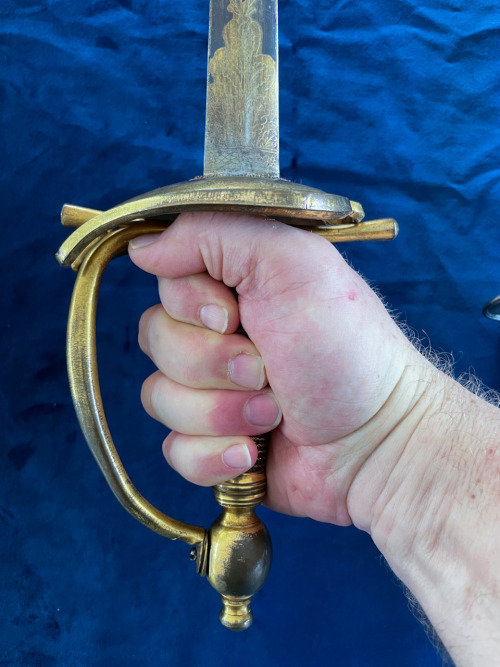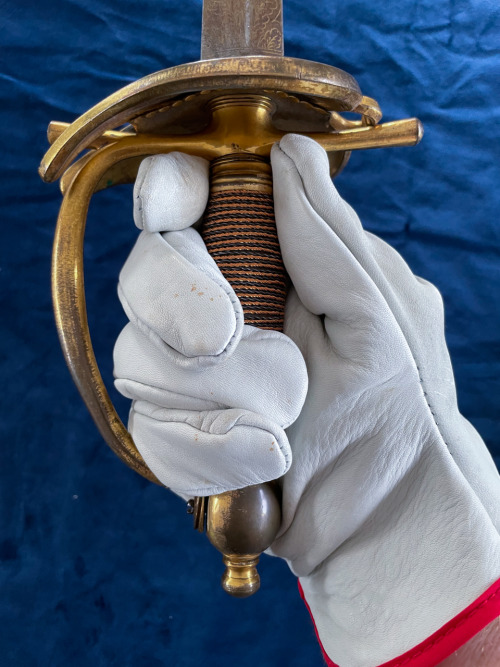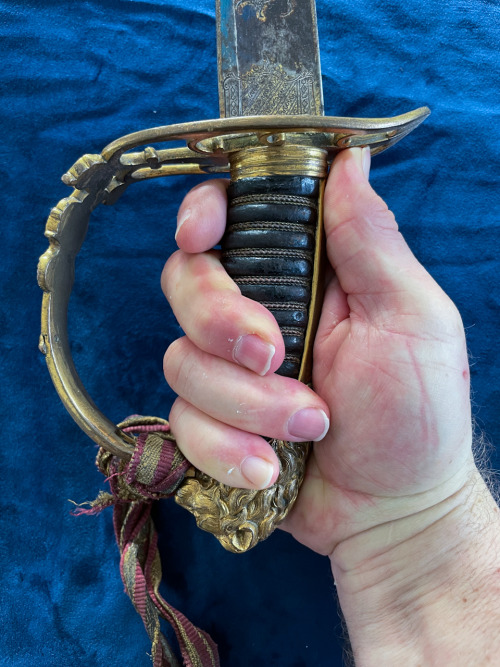#1796 pattern
Following on from my posts on sword grips, here is a size comparison between the heavy and light cavalry trooper swords of the French and British Napoleonic armies.
From top to bottom:
French Model An XIII Sabre of the line, - used by Dragoons and Cuirassiers
Originally this blade would have been issued with a hatchet point making it slightly longer. However, by 1814 field modifying them into spear points became common and in 1816 this became an official modification, getting retroactively applied to swords in service.
- Total Length: 1120mm
- Blade Length: 960mm
- Sword Weight: 1300 grams
British 1796 Pattern Heavy Cavalry Sword
Based on the Austrian model 1769 the British sword was originally issued with a hatchet tip. However, like their French opponents, field modification into a spear point became common practice to make the sword more effective in the thrust.
- Total Length: 1020mm
- Blade Length: 890mm
- Sword Weight: 1020 grams
French model An XI, - used by ‘Hunters on horse’, Hussars, Lancers, and Mounted Artillery
Introduced in year eleven (1802) of the Revolutionary calendar the AN XI came about as a rationalisation of the different models of light cavalry sabres in service to meet the supply demands of near constant warfare the new French state found itself in.
- Total Length: 1010mm
- Blade Length: 870mm
- Sword Weight: 1190 grams
British 1796 Pattern Light Cavalry Sabre, - used by Light Dragoons and Mounted Artillery
Designed by John Gaspard le Merchant with cooperation from Henry Osborn in response to complaints of British cavalry troopers on the poor performance of their 1788 pattern sabres. Based loosely on Eastern European sabres the 1796 LC proved to be a hard hitting sword and immensely popular.
- Total Length: 945mm
- Blade Length: 820mm
- Sword Weight: 880 grams

Post link
In the vein of @victoriansword post showing different grips for holding swords above are some photos I took of other British Georgian era swords for comparison.
They are, top to bottom:
1. 1796 Pattern Heavy Cavalry troopers sword
2. 1796 Pattern Heavy Cavalry officers dismounted service sword (with the boat-shell guard).
3. 1803 Pattern Light Company officers sabre.
Out of interest I tried the grips while wearing leather gloves, my rational being that it was likely that these would have been worn most of the times that the swords were used. I don’t have large hands, the gloves are a medium size I purchased from a hardware store. They’re a good fit, but I found that with the 1803 they took up a lot of the space inside the guard.
My personal impression, is that the 1803 favoured the hammer grip as it is mostly a cutting sword. The thumb up the back was good for the 1796 HC officers sword and the 1796 HC trooper when giving point. That said I wouldn’t be surprised if they changed to a hammer grip on the trooper sword once they got into melee.
I will follow this post up with a similar one for three French swords.
Post link



